Elevate CX with unified, enterprise-grade listening
Sprinklr Insights gives you real-time consumer, competitor and market intelligence from 30+ channels without the noise. Make smarter decisions, strengthen your brand, and stay relentlessly customer-led.
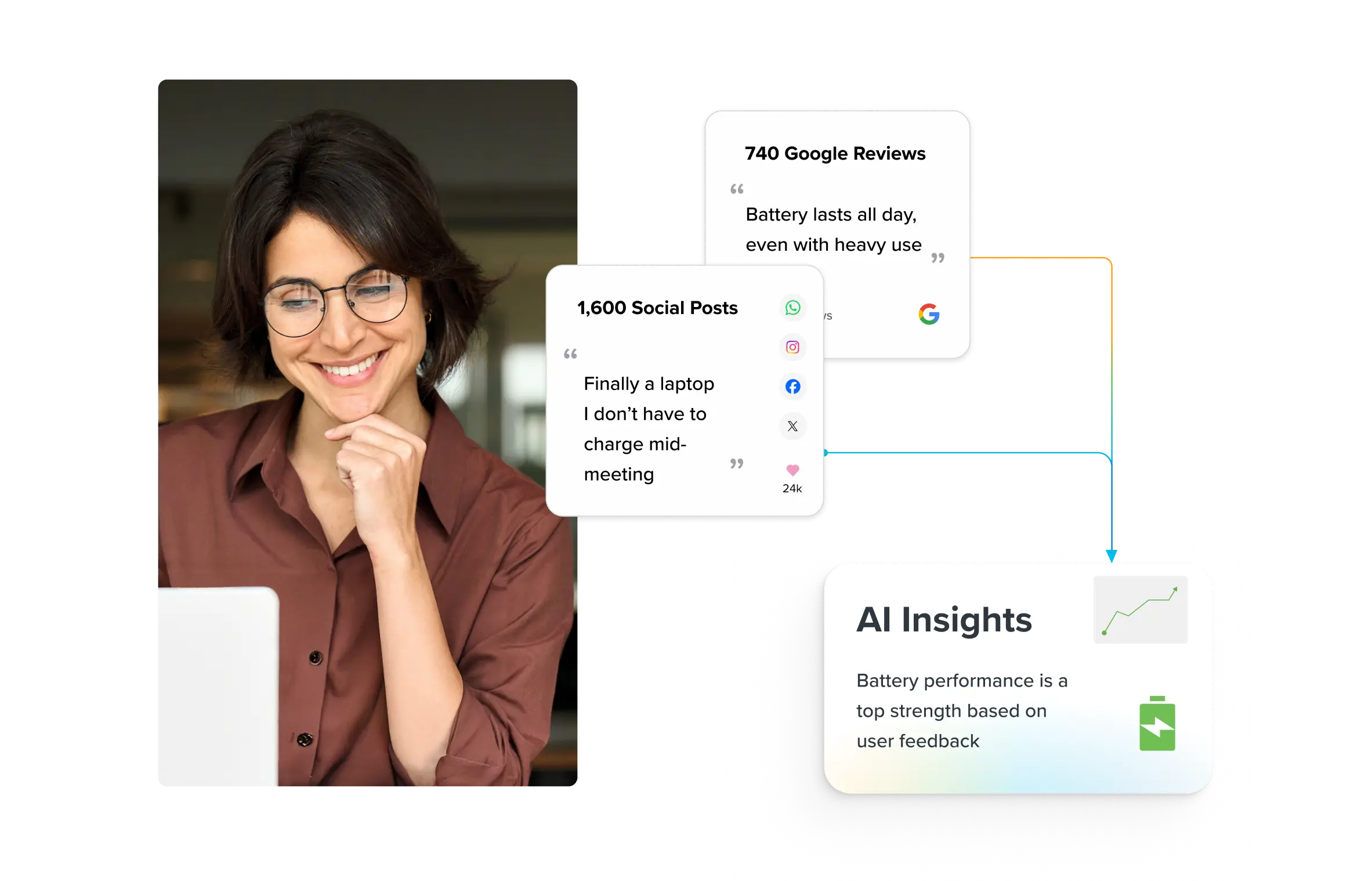
What is Customer Segmentation? All You Need To Know
You cannot sell everything to everyone at once. Try doing that, and your offering will reach no one.
This age-old marketing wisdom was sobbing in a corner when Microsoft launched Windows Phone 7 in 2010.
Everything about the product was primed to succeed: It was built by a legendary brand, officially brought the Windows OS to mobile, had cutting-edge hardware, and gave the world the “Metro” design.
Nine years later, Microsoft pulled the plug!
At its peak in 2013, Windows Phone's market share was just 3.6%. By the end of its life? A non-existent 0.01%.
Just for comparison, Android had 79% and iOS 13-16% market share in the same year, 2013.
So, why did Android and iOS users not flock to a fresh product, despite all the features and brand clout?
Well, one among many interpretations of the Windows Phone’s coda is that it lacked a clearly defined target audience. And no amount of design polish or brand prestige could substitute it!
Products and services don’t appeal to customers themselves. You must position and market them so prospects can see the value they care for — and make a call.
This is where customer segmentation comes in, and becomes non-negotiable in 2025, as consumerism grows and so do your competitors and potential customers.
In this piece, we’ll walk you through everything you need to know about customer segmentation, so you can shift from broad to laser-focused messaging and positioning.
- What is customer segmentation?
- Why should you do customer segmentation?
- 6 Most effective types of customer segmentation
- Step-by-step process for customer segmentation and analysis
- Tools that power customer segmentation
- 3 Practical applications of customer segmentation in marketing, CX, and sales
- Common mistakes in segmentation
What is customer segmentation?
Customer segmentation is dividing your prospects and customers into groups (called segments) based on shared characteristics such as behavior, needs, location, values, buying patterns, and more.
The goal is to categorize customers into high-yield segments and tailor your brand messaging, offers, and experiences that feel personal, curated, and relevant to them, which increases the odds of conversion.
In 2025, customer segmentation is about understanding how people think, act, and decide with hyper precision, thanks to the enormous amounts of consented data and the technologies that make gathering and analyzing such data possible.
Segments, or rather micro-segments, are now as narrow as “full‑time MBA students who live in urban areas, earn $90K+, and clicked our ad for Product X in the last 24 hours.”
Technologies like machine learning and AI enable unsupervised clustering to trace latent segments and so much as update existing ones instantly through unified platforms.
For example, if you abandon a cart, you immediately shift into a “cart abandonment” segment for a dynamic discount campaign.
🔥 Refine customer segments with real-time data, AI, and social listening — in one platform
Sync customer data from owned sources with one-click connectors, along with social signals, and build segments you can activate instantly across ad channels using Sprinklr’s Smart Audience Engine.
Pair it with Audience Insights’ AI-driven social analytics to uncover demographics, interests, and affinities — so you can craft laser-focused campaigns that truly resonate.
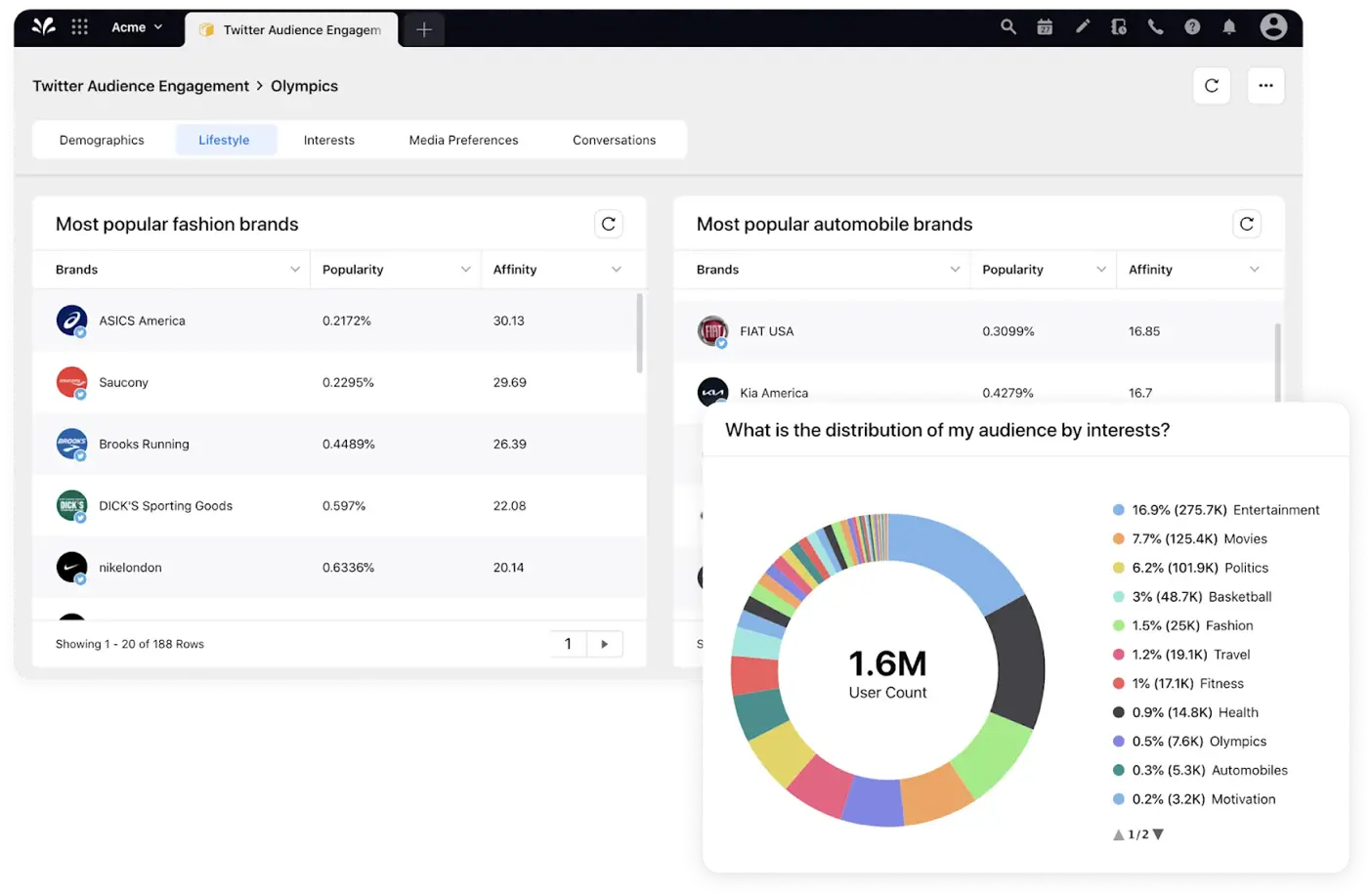
Why should you do customer segmentation?
McKinsey's study on a European retail bank found that granular customer segmentation and tailoring product offerings helped the bank achieve over a 20% increase in checking account revenues. This approach even expanded the addressable market beyond initial expectations.
So, done right, customer segmentation drives real business results, such as:
Smarter budget use
Instead of casting a wide (and expensive) net for acquisition, you direct resources where they’ll make an impact on your target customer segment.
For example, college students’ spending power in the US alone is estimated at $574 billion.
Comcast saw the opportunity and launched a student-exclusive offer in partnership with Amazon Music and HBO.
The deal gave students access to thousands of shows, movies, and live sports.
Within just a week, Comcast saw a sharp spike in web traffic and a noticeable increase in conversions.
Higher lifetime value
Personalized experiences encourage repeat purchases, upgrades, and deeper brand engagement over time.
🎓Learn from Vodafone Germany
Customer segmentation need not always follow statistical and traditional methodologies. You can use social listening to segment customers in real time based on sentiment and virtually any factor traceable through conversations and target them with relevant promotions in paid and organic channels.
Vodafone Germany uses social listening to identify prospects who show a positive perception of 5G networks and target that customer segment with 5G promotions while excluding those who showed negative sentiments.
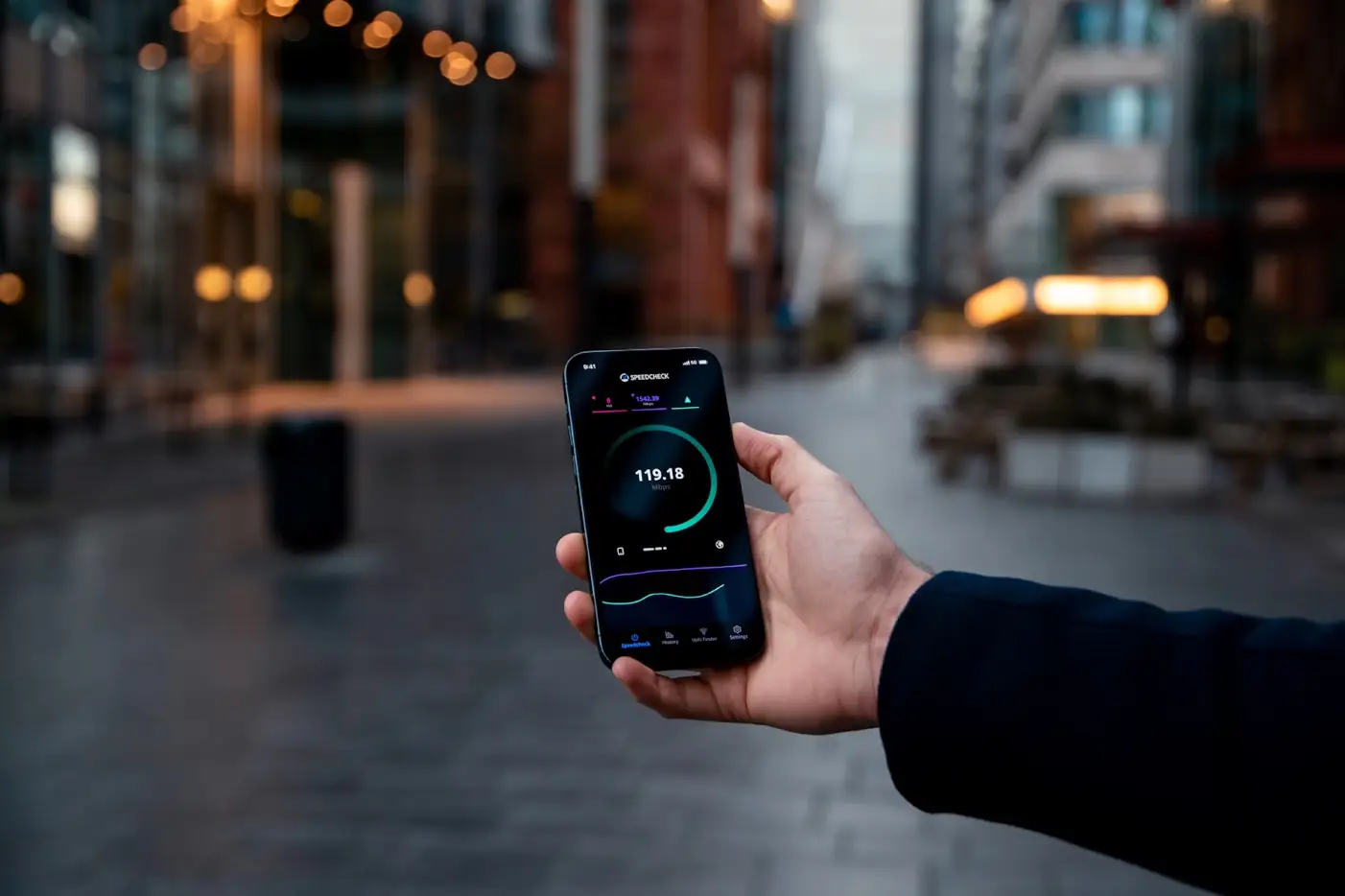
Brands that deliver strong personalization earn customer loyalty at rates 1.5 times higher than those that fall short.
Better product decisions
Segmenting and analyzing helps discover what different groups want. It’s like inviting a group of like-minded people into a room and getting to know their preferences, pain points, and desires.
Once you know the room full of like-minded people (customer segment) well enough, you can use the information to shape your features, pricing, and position products and services accordingly.
A solid example of this approach is the retail chain Argos. They offer a wide variety of products, including appliances, furniture, clothing, and jewelry which helps the brand segment customers.
Agros then estimates each shopper's budget and likely age by analyzing past customer purchases. Using this information, they target their customers with relevant discount offers.
Better conversions and experiences
Targeted messaging means you're speaking directly to what each group cares about, making them far more likely to use your product or service.
No surprise — 91% of customers are more likely to stick with brands that offer attractive and relevant recommendations.
A loyalty discount or a message that says “we see you” can make all the difference. It’s not just about driving sales (though it does); it’s about building connections that make your customers want to come back.
The best brands ensure that consumers feel like more than just a number. Again, to achieve such levels of personalization, you don’t always have to rely only on traditional customer segmentation.
Vodafone Idea Limited (Vi), for example, uses Sprinklr’s Unified-CXM platform to identify negative Google reviews (behavior-based customer segment) and promptly address them right in the review environment, without diverting into email support.
In this way, Vi noticed a 500% increase in Google reviews from June to October 2022 and a 40% increase in positive Google reviews for physical stores in the same year!
⁉️Did you know - “Segment of one” is a marketing term that refers to hyper-personalizing marketing to the point that it is only relevant to one individual? It involves tailoring marketing messages and experiences to match the specific needs and preferences of each customer, not even a segment!
Stronger loyalty
When customers feel understood, they stick around.
Segmentation helps you build trust through relevance such as personalized marketing, offers, discounts, products/services, dashboards, and so on.
According to McKinsey study, brands that personalize their marketing capture 40% more revenue. So, loyalty and revenue go together.
🧠 Learn more: 4 Ways to get the most from visual-data insights
6 Most effective types of customer segmentation
There are six main customer segments you can consider, but this is not exhaustive [click on the image👇 to see it in more details 🔎]:
1. Demographic - Age, gender, income, education. E.g., teens vs. retirees
2. Geographic - Country, city, climate. E.g., NYC vs. rural Texas
3. Behavioral - Shopping habits, brand loyalty. E.g., regular buyers vs. first timers
4. Psychographic - Lifestyle, interests, values. E.g., eco-friendly customers
5. Firmographic (for B2B) - Industry, company size, revenue. E.g., small tech startup vs. Fortune 500 bank
6. Value-based - Prioritizes high-value customers to maximize profitability and retention. E.g., higher customer lifetime value (CLV) vs. lower CLV
❓Know how to: Analyze your target audience profile
Step-by-step process for customer segmentation and analysis
Customer segmentation isn’t just about grouping users according to surface-level traits.
Below is a practical, step-by-step playbook to help you build and validate segmentation that drives real outcomes.
Step 1: Know what success looks like before you start
Before diving into data, get clear on why you're segmenting. What’s the core problem or opportunity you're addressing?
❓Why do this
→ Focuses segmentation on actionable use cases like reducing churn or increasing upsells
→ Helps prioritize which customer behaviors or traits to analyze (e.g., trial-to-paid conversion). ✨Here’s a guide on customer behavior analysis
→ Aligns cross-functional teams around shared KPIs (e.g., lower CAC, higher CLTV, NPS, CSAT)
→ Prevents wasted time analyzing irrelevant data points
Take NRMA’s (National Roads & Motorists Association) approach to segment customers as an example.
Instead of tackling customer experience at a surface level, Tina Morrell, general manager for customer strategy and experience design, and the team dove into the voice of the customers and NPS data using Sprinklr Insights to identify detractors and their pain points.
They used the data to segment their customers — in this case, detractors — and attribute four key pain points, and create four cross-functional squads to address each!
Morrell says: “Even if you don't have a VoC solution, you can pick one complaint and ask yourself, how would you get a team together to solve that problem? Even if they fail, that’s okay.”
So, the idea is to define a clear, achievable goal and organize your teams around it.
In this way, NRMA didn’t just unify their data; they unified their people.
That mindset shift is important if you're looking to define meaningful segmentation goals that drive CX impact.
💭 Go beyond demographics. Get sentiment and the voice of the customer insights to inform your customer segmentation
Your customers are individuals with unique pain points and dispositions. Demographic and geographic segments only tell so much.
Dive deeper into your customers’ psyche by listening to their conversations outside predictive sources and capturing sentiments and raw feedback using Sprinklr Insights.
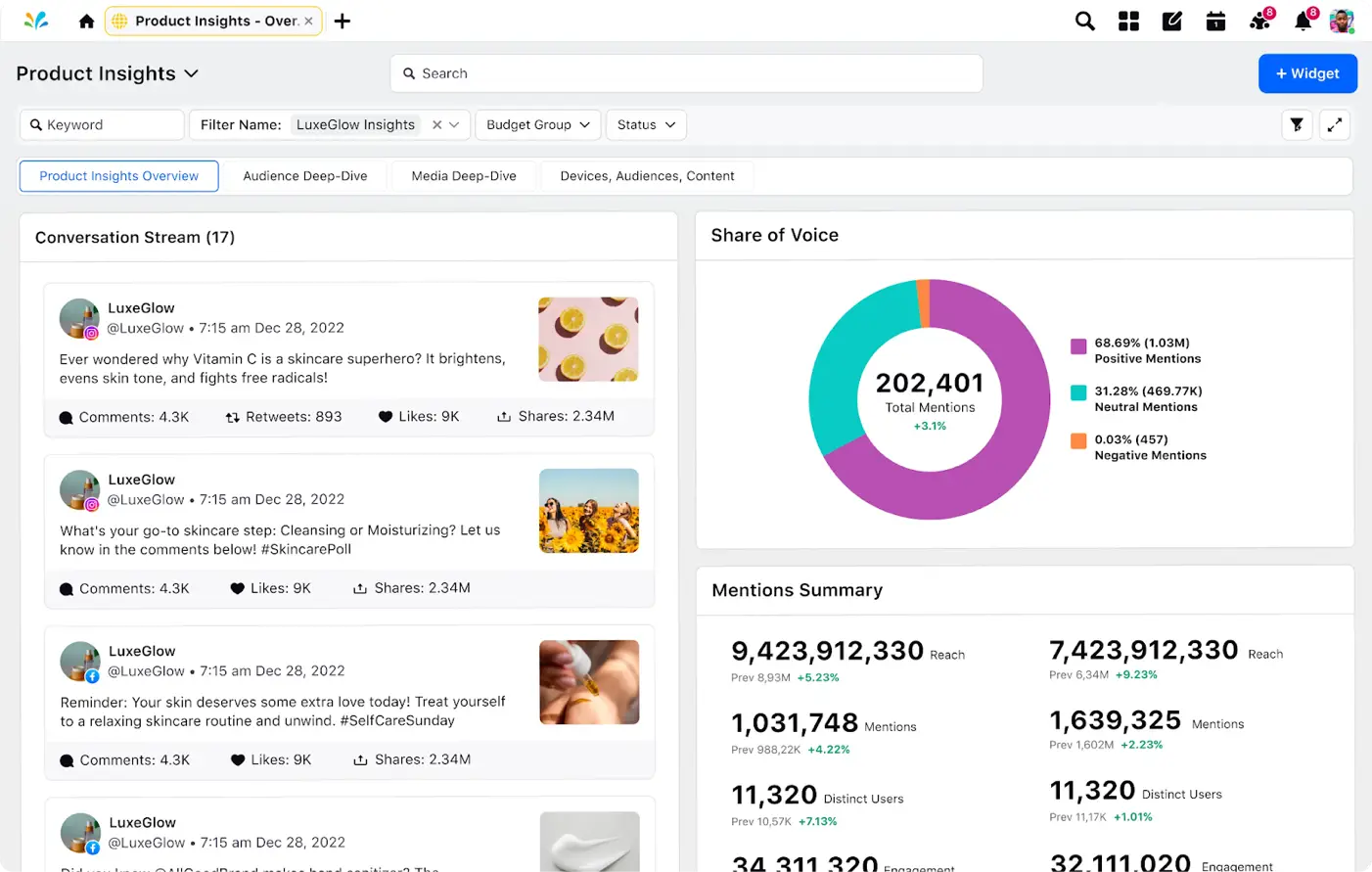
Step 2: Assess what you have and what’s missing
Once your goal is defined, take stock of the data you'll need to support it.
This step often identifies gaps in your customer strategy.
Maybe you're not tracking product usage deeply enough or demographic information is inconsistent.
❓Why do this
→ Identifies gaps like missing lifecycle stage, purchase history, or engagement scores
→ Highlights which tools or platforms need better data integration (e.g. CRM + email platform)
→ Improves accuracy for behavior-based customer segmentation like churn risk or purchase frequency
→ Enables cleaner data pipelines for AI/ML-driven analysis
Tool stack
- Sprinklr for voice-of-customer insights across social channels
- GA4, Bazaarvoice to understand digital behavior
- Google Data Studio, Power BI to visualize data completeness
Step 3: Turn data into real, relatable profiles
Once you have the insights handy, it's time to bring them to life with detailed buyer personas.
Buyers' personas are fictional yet data-driven profiles that represent your ideal customers and help translate raw data into actionable plans tailored for them.
The goal here is to humanize each segment so you can better connect with and serve them.
Here’s what to include in each persona:
- Name and title - Give each persona a name and role that reflect their identity (e.g., startup Sam, a 32-year-old founder of a SaaS startup)
- Demographics - Age, gender, location, income, or company size (if B2B)
- Goals and motivations - What are they trying to achieve? What matters most to them?
- Pain points - What challenges or frustrations do they face that your solution can solve?
- Buying behavior - How do they make decisions? Who influences them? What channels do they use?
👉 You may like: How to build a social media persona for your brand
❓Why do this
→ Equips your sales team with persona-specific talking points and objection handling
→ Helps product teams prioritize features based on persona-specific needs (e.g. “budget buyers” want fewer features, lower cost)
→ Improves campaign/content personalization across channels like email, ads, and landing pages
→ Reduces guesswork in creative strategy and content development
Step 4: Pick the right segmentation method
With data in hand, decide how you'll break customers into meaningful groups.
This choice depends on your goal, data quality, and team skills.
Quantitative methods are ideal when you want to scale and objectivity.
Examples include: RFM (Recency, Frequency, Monetary value), K-means clustering or decision trees, churn probability or LTV-based groupings, etc.
Qualitative methods give you more customer context and nuance.
These include survey-driven personas, customer interviews or support transcripts, sentiment analysis from reviews or feedback forms, and more.
Tool stack
- Run surveys, get support call transcripts, and sentiment data from Sprinklr Insights
- Excel, Python (sklearn, pandas), or Google Sheets for RFM or clustering
❓Why do this
→ Prevents using outdated or irrelevant models (e.g., relying on age when behavior matters more)
→ Matches data depth — e.g., choose psychographic if you’ve got rich survey data, behavioral if you're tracking product usage
→ Supports the right tools (manual filters for small teams vs. clustering for larger datasets)
🔥 Get every tool you need to inform customer segmentation — in one unified platform
Sprinklr Insights integrates owned data with 30+ social and digital channels, 400K+ media sources, 1B+ websites, and review sites for unprecedented insights into your customers.
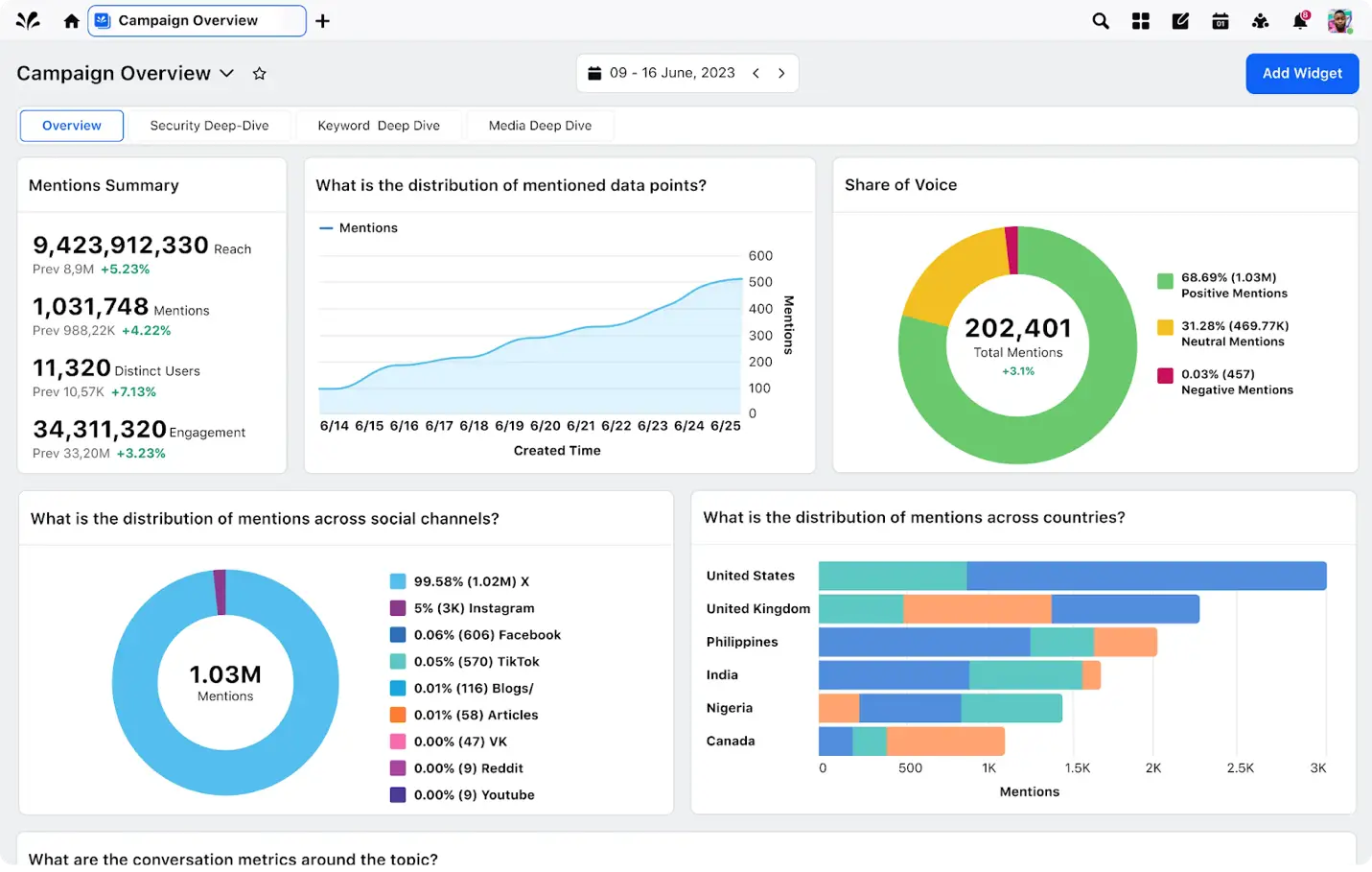
Inform your customer segments with data from six sources:
✅ Conversational surveys
✅ Social listening
✅ Product listening
✅ Visual listening
✅ Location-based listening
✅ Competitive insights and benchmarking
✅ Media monitoring and analytics
Step 5: Identify similar customer groups and verify segments
At this stage, you have data ready for segmentation.
Depending upon your tech stack, you will now segment the data through various available techniques.
It’s best to avoid manually segmenting customers at a large scale (pssst… Excels) to prevent human errors and save time and effort for strategy.
For example, if you use Sprinklr for marketing campaigns, audience segmentation comes built-in with Smart Audience Engine and Segment Manager features.
Using the Smart Audience Engine, you can use data from Sprinklr surveys, social listening, and connected social media accounts to validate and activate segments within the platform itself.
If data is not readily available on Sprinklr (such as, you don’t use it), you can import it from your web, mobile, social, email, e-commerce, CRM, CDM, etc., to Sprinklr via secured third-party integrations and APIs.
To create customer segments, you must ingest data on Sprinklr through the data collection and connector modules in Segment Manager. This process essentially readies the customer data, external or internal, for activating your customer segments.
You can create a new segment by filling in basic details and giving it a name. The various types of customer segments you can create are:
→ Audience lead-based - people who’ve engaged with specific social content
→ Profile list-based - importing user lists from external sources like email lists, service contracts, and CRM
→ Lead event-based - based on specific actions performed by users
→ Smart Segment - using AI and ML to auto-segment users based on behavior and preferences
Once the data is available in Segment Manager and the platform has processed it, the next step is to activate the segment 👇
Activating connects your customer segment to specific channels or profile lists, so you can engage with that audience through various marketing efforts on Sprinklr.
Once you activate a segment, say, on Facebook, you can target specific content or ads curated for that segment (of course after following the subsequent ad setup and related workflows)!
For example, a retail brand creates a segment of customers who purchased winter apparel last year.
They activate this segment on Facebook to promote a new winter collection, ensuring ads reach an audience with a proven interest in such products.
You can activate segments for other social and marketing platforms, too, such as emails, paid ads, etc.👇
Using tools other than Sprinklr to segment customers?
Filters or cluster segments based on your chosen method to categorize:
High spenders with low engagement (at-risk VIPs)
Recently acquired users who churn within 14 days
Users in specific industries with above-average ticket volume
Power users from SMBs vs enterprises
For example, identify a cluster of users who visit your pricing page multiple times but don’t convert. That’s a segment worth targeting with high-intent messaging.
❓Why do this
→ Helps discover high-value micro-segments like “dormant users with high LTV potential”
→ Enables hyper-targeted campaigns (e.g., upselling only to high-engagement freemium users)
→ Uncovers hidden relationships, like feature usage predicting churn
→ Informs pricing experiments or tier adjustments based on real group behavior
Step 6: Validate your segments in the real world
Don’t roll out your segments organization-wide just yet. Instead, run a small test to validate whether your segmentation is meaningful.
If you use platforms like Sprinklr, it automatically computes each segment’s reach (i.e., counts how many profiles match your filters) and prevents activation until that “reach” calculation is complete.
However, it does not assess whether those filters truly map to meaningful customer groups.
You still need to run a small pilot or use qualitative/quantitative checks to validate that the segment makes sense in the real world.
You can do that manually or simply overlay the segments with social signals of the segment right on Sprinklr.
This will show you topic clusters, sentiment breakdowns, demographic skews, shared affinities, etc., specifically for that segment.
Here’re the three types of audience research you can do, each informing specific things about your segment 👇
You can compare those insights against what you expect (and against your overall audience), check if the segment groups together people talking about the same things or sharing the same interests
When you compare the existing customer segments with social signals, you can assess whether the segments align with customer affinities and patterns from the real world.
If you’re manually validating segments, you can use social listening (again, possible on Sprinklr), statistical methods, cross-validation, customer interviews/surveys, and feedback loops to compare the segments. But these processes are add-ons and typically cost extra time and effort.
❓Why do this
→ Shows if a segment like “deal seekers” converts better with discounts vs. loyalty points
→ Surfaces weak or overlapping segments that need refining
→ Provides clear engagement and conversion data before a full-scale rollout
→ Helps prioritize future campaigns based on segment performance (e.g. AOV uplift)
Tool stack: Sprinklr Insights, Braze, Mailchimp or Optimizely lets you A/B test campaigns easily across cohorts.
💡 Pro tip: Watch out for engagement lifts, customer feedback, and whether the segment behaves consistently over time. Want to know how? Take a quick look at this complete guide on consumer insights.
Step 7: Roll out your strategy — and keep improving
Once you’ve validated the segmentation logic and seen initial results, it's time to activate across your customer’s lifecycle.
As you have seen, if you use Sprinklr, you can activate the segments for targeted ads, content, and various other marketing efforts within the platform.
If you use different platforms for marketing, you can:
Use your CRM to tag or filter accounts by segment
Align sales, marketing, product, and CS teams around segment-specific strategies
Set up recurring dashboards to track performance by segment
Use AI-powered insights to book an omnichannel CX strategy. Check out our post for more tips on using data to deliver personalized, consistent customer experiences across every touchpoint
❓Why do this
→ Enables ongoing tweaks to messaging, channel mix, or offers based on live segment data
→ Supports A/B testing by segment to maximize ROI per group
→ Tracks segment movement over time (e.g., converting leads into loyalists)
→ Keeps your segmentation relevant as customer behavior or the market shifts
Tool stack
- Sprinklr Marketing for marketing and social campaigns
- Adobe Marketo Engage for marketing automation
- Amplitude or Heap to track behavioral shifts post-segmentation
- Sprinklr Service or Zendesk to customize support experiences per segment
💡Pro tip: Customer segmentation isn’t a one-time task — it’s an ongoing conversation with your customers. Check-in every quarter to tweak and refine your segments as their behaviors and needs evolve.
You can use Sprinklr’s AI-first consumer intelligence suite to uncover trends, themes, and root causes in real time. Vertically tailored AI with 90%+ accuracy monitors trends 24/7 and gives you clear, actionable recommendations.
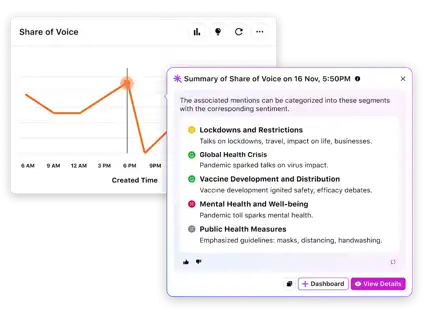
When you follow the process step by step, you create a lens that helps your entire team see your customers more clearly.
Now that you've got the process down, let’s break down the different types of tools for customer segmentation so you can choose an approach that fits your business best.
Tools that power customer segmentation
Finding the right combination of platforms and tools suitable for your brand’s customer segmentation process could mean the difference between generic groupings and high-impact insights.
Here's a breakdown of essential tool types, how they're used, and top examples to consider:
Tool type | Use | Examples |
CRM, CDP, customer service suits | Store and manage customer profiles and engagement history | Sprinklr Service, ServiceNow, Zendesk Support |
Analytics platforms | Behavioral segmentation, cohort analysis | Sprinklr Insights, GA4, Mixpanel, Amplitude |
Data visualization | Spot patterns and trends across segments | Sprinklr Insights, Looker, Tableau, Power BI |
Social listening + CX | Track sentiment and customer feedback across channels | Sprinklr Insights, Medallia, Brandwatch |
Marketing automation | Execute campaigns tailored to different segments | Sprinklr Marketing, Braze, Adobe Campaign |
👉Also read: What is strategic brand management? Concepts and techniques
3 Practical applications of customer segmentation in marketing, CX, and sales
Customer segmentation analysis is relevant across your brand’s entire journey. Here's how different teams can activate segmentation:
1. Build connections with email and ad targeting
Tailor content and offers based on segment behavior or persona.
How The Body Shop does this is remarkable. By tapping into shared values like cruelty-free practices and ethical sourcing (that’s value-based targeting!), it creates more than just transactions. It builds trust.
That emotional connection turns curious first-time buyers into loyal customers who come back not just for products, but because they feel aligned with the brand’s deeper mission.
💡Pro tip : Your brand’s story isn’t told in words alone. Use Sprinklr Visual Insights to track visual brand mentions in real time, identify user-generated content that features your products or logo, detect unauthorized logo use, and protect your IP.
AI automatically detects your brand logo, products, and other visual cues across 30+ digital, social, and media channels
You get AI-powered alerts when your brand appears in risky or inappropriate contexts
You can use the insights to curb illegal, risky usage, and amplify the positive ones
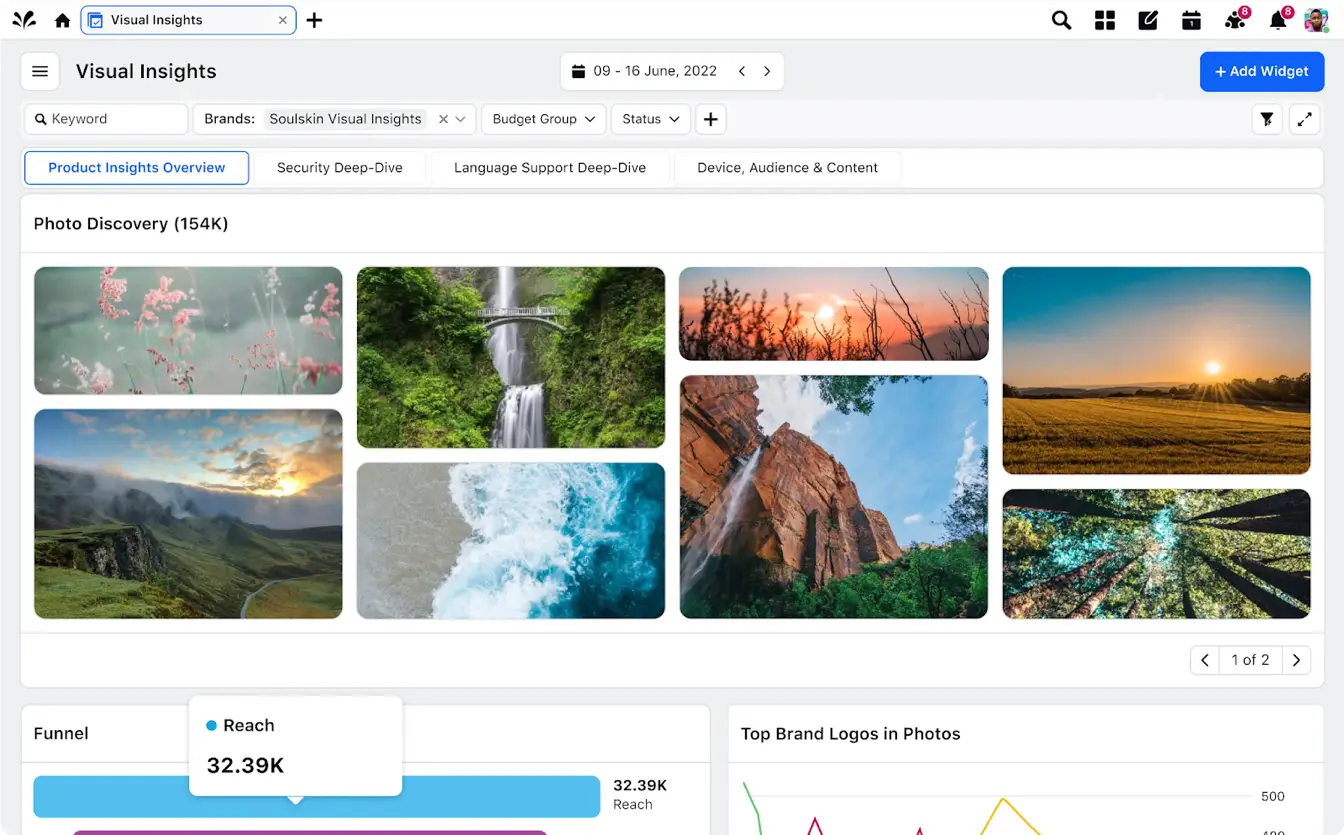
🙆Pro read: Expert take: Capturing insights with (visual) social listening
Tailor website experiences based on visitor segments
Nearly 63% of customers now see personalized engagement as a basic expectation, not a bonus. Use personalization to show the right message to the right segment on your website.
You can get hints from Pinterest. It doesn’t just guess what you might like — it listens.
From that late-night scroll through DIY ideas to bookmark cozy home decor or trendy outfits, every interaction helps Pinterest understand what makes you tick.
By segmenting users based on these behavioral, psychographic, and geographic interests, Pinterest curates content and ads that feel surprisingly spot-on.
Prioritize sales efforts around high-value segments
Seventy-seven percent of consumers have chosen, recommended, or spent more on brands that deliver personalized experiences.
Arm your sales team with segment-specific insights for better outreach.
Take Dove, for example. Instead of leaning into one-size-fits-all beauty ideals, they launched the “Real Beauty Campaign” to connect with women on a deeper, more emotional level.
That emotional connection translated into action: people talked about it, shared it, and remembered it.
The campaign sparked millions of conversations, went viral across platforms, and gave Dove a stronger voice in a cultural shift toward body positivity.
Common mistakes in segmentation
Many brands fall into segmentation pitfalls because they rush the process, apply an unsuitable strategy, or get overwhelmed by mountains of unusable data.
They often lean on surface-level attributes or overcomplicated segmentation models without testing their usefulness.
Here are some common segmentation mistakes to watch out for:
❌ Segmenting based on vanity data (e.g., job title) instead of behavior or value
❌ Creating too many micro-segments that aren't actionable
❌ Not validating segments through real-world testing or feedback
❌ Applying the same messaging across all customer segments
❌ Ignoring competitive benchmarking data and not paying attention to market trends
Make customer segmentation your strategic advantage with Sprinklr
Customer segmentation shouldn’t just tick off the box — it should deepen your understanding of people.
When you combine thoughtful segment design with real analysis and align it with your business goals, the results go beyond clean data.
You create experiences that resonate with others. Choosing the right tools and platforms (CDPs, CRMs, analytics tools) helps you segment faster and with better insights.
Sprinklr Insights unify customer data, spots trends early, and assist your teams in moving quickly. Sprinklr’s AI helps identify trends, risks, and opportunities, so you’re not just reacting; you’re anticipating.
Also, because it connects marketing, CX, and sales, your entire organization can rally around the same insights and make smarter decisions at scale.
Request a demo and see how Sprinklr helps turn insight into action and action into loyalty.
Frequently Asked Questions
Customer segmentation divides your audience into groups based on traits like behavior, needs, or demographics. It’s essential because it enables targeted marketing, leading to better engagement, higher conversions, and stronger customer loyalty.
Global enterprises analyze customer data to uncover patterns tied to business goals, such as revenue, churn risk, or strategic fit. Prioritization is typically based on value potential, alignment with objectives, and ease of activation.
Key data sources include CRM systems, product analytics, social listening platforms, and marketing automation tools. Tools like GA4, Sprinklr, and Segment help unify data and make it actionable.
CMOs automate and scale customer segmentation efforts by integrating tools across the tech stack and using AI or machine learning to identify, update, and act on segments in real time. Platforms like Sprinklr help scale this across channels with minimal manual effort.
You can track metrics like segment-wise engagement, conversion rates, CLTV, churn, and campaign ROI. These indicators show how well your segmentation drives real business impact.








